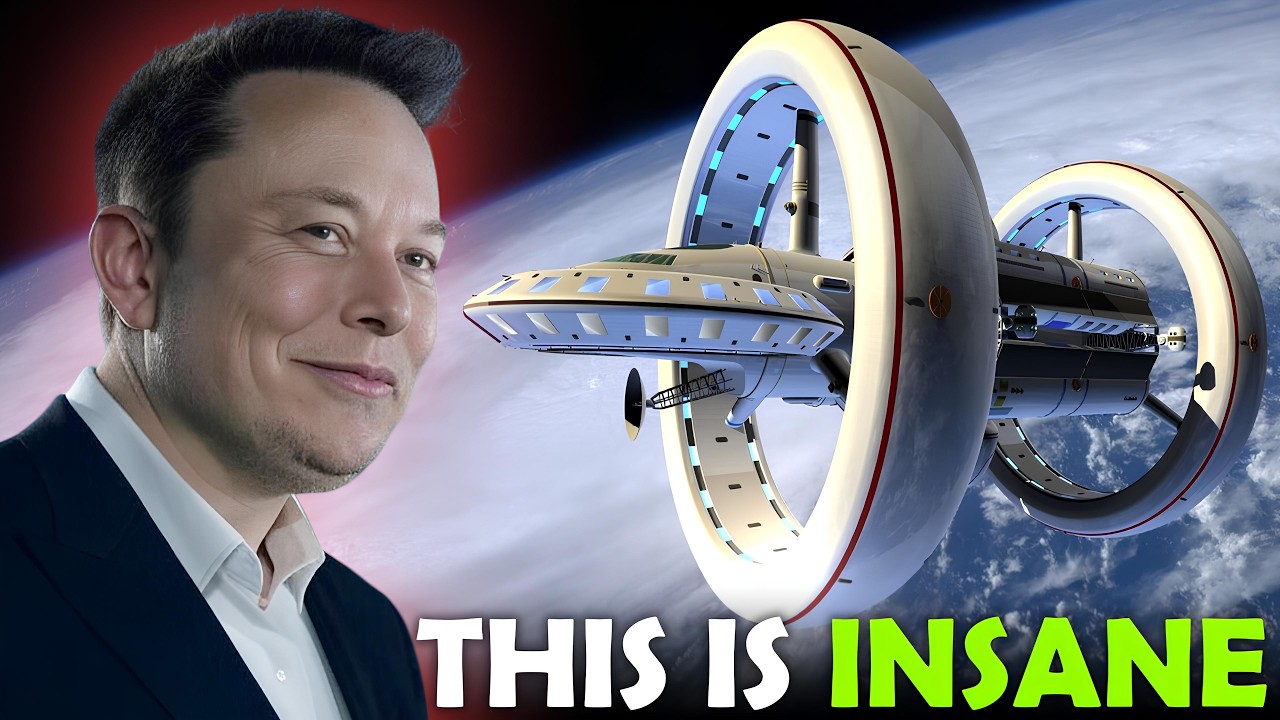Elon Musk’s Starship Unleashed: The Space Race Just Hit Warp Speed!

Elon Musk’s Starship Unleashed: The Space Race Just Hit Warp Speed!
Introduction: Elon Musk’s SpaceX has once again made history, this time by unleashing the much-anticipated Starship, a spacecraft that promises to change the course of space exploration forever. With the launch of Starship, the space race has hit warp speed, as SpaceX’s ambitious vision for interplanetary travel becomes a tangible reality. Starship is designed to be the ultimate spacecraft for missions to the Moon, Mars, and beyond, setting the stage for humanity’s future as a multi-planetary species. Musk’s bold claims about the potential of Starship have sparked excitement and intrigue in both the space industry and the general public, making it clear that SpaceX is leading the charge in the new era of space exploration. In this article, we take a deep dive into the significance of Starship’s launch, its potential to revolutionize space travel, and how it has reignited the space race on an entirely new level .
.
Starship: A Game-Changer for Space Exploration Starship, the latest creation from Musk’s SpaceX, represents the culmination of years of research and development. This fully reusable spacecraft is designed to carry both crew and cargo on long-duration missions, capable of reaching destinations like the Moon, Mars, and potentially even farther into the cosmos. What sets Starship apart from any other spacecraft is its size, versatility, and reusability—key features that Musk believes will drastically reduce the cost of space travel and pave the way for regular, large-scale space missions.
At its core, Starship is built to be the most powerful rocket ever created. With a combined payload capacity of over 100 tons to low Earth orbit (LEO), it will be capable of transporting astronauts, satellites, and even entire space stations. SpaceX’s plan is to make Starship fully reusable, with rapid turnarounds between missions—a crucial aspect for making space travel affordable and sustainable. The spacecraft’s design incorporates a stainless steel body that can withstand extreme temperatures during re-entry, while its state-of-the-art engines are capable of propelling it to orbital speeds with incredible efficiency.
What makes Starship truly revolutionary is its potential for interplanetary travel. While its initial missions will focus on Moon and Mars exploration, Musk has envisioned Starship as the vehicle that will one day transport entire human colonies to other planets. Starship is designed for long-duration space missions, equipped with ample living space, supplies, and cutting-edge life support systems to ensure astronauts’ safety on journeys lasting months or even years. With such capabilities, Starship has the potential to unlock the doors to an entirely new era of human exploration beyond Earth.
The Space Race Reignited: Space exploration has evolved dramatically over the past century, but Musk’s Starship launch has marked a major turning point. With this new venture, SpaceX is not only aiming to bring the space race to new heights but also to redefine what is possible in space exploration. While governmental space agencies like NASA have long led the charge, the rise of private companies like SpaceX has reinvigorated the competition and brought new energy to the space race. The stakes have never been higher, as SpaceX, Blue Origin, and other companies push the boundaries of space technology.
The announcement of Starship’s capabilities has sparked renewed interest in space missions, with countries around the world beginning to accelerate their own space programs in response. Starship represents the next frontier in space exploration, and it has created an environment where innovation, investment, and collaboration are key to staying competitive. Whether it’s developing new spaceports, collaborating on global missions, or working toward the commercialization of space travel, Starship’s influence has sent ripples throughout the industry, inspiring both public and private sector players to reach for new heights.
In addition to its practical applications for space exploration, Starship’s launch has reignited public interest in space. People around the world are once again excited about the possibilities that lie beyond Earth’s atmosphere. Space tourism, for instance, is becoming increasingly viable thanks to developments in reusable spacecraft like Starship. While the technology is still in its early stages, the fact that private companies like SpaceX are actively working on making space accessible to non-professional astronauts is a thrilling prospect that is sure to capture the imagination of future generations.
Starship’s Potential: The Gateway to the Future Starship is not just a spacecraft—it’s a symbol of the future of human civilization. Musk has long stated that the ultimate goal of SpaceX is to make humanity a multi-planetary species, with Mars as the primary target. Starship will be key to achieving that vision, serving as the transportation vehicle for large-scale missions to the Red Planet. But Musk’s ambitions go even further. In addition to its role in space exploration, Starship could play a pivotal role in expanding humanity’s reach across the galaxy.
One of the most exciting features of Starship is its potential for rapid and affordable travel. While traditional space missions can take years to prepare, Starship’s reusability will allow for quicker turnaround times and lower costs, ultimately opening the door to more frequent space travel. This could revolutionize how we approach space missions, with the possibility of sending multiple crews to Mars and beyond in the coming decades. The technology could even pave the way for long-term human settlements on other planets, marking a monumental step for humanity in its quest to survive and thrive beyond Earth.
Moreover, Starship could play a crucial role in scientific research. The spacecraft’s massive payload capacity makes it an ideal vehicle for sending scientific instruments and research equipment to distant planets and moons. It could also be used to establish research stations in space, providing a platform for international cooperation and collaboration in space science.
The Challenges Ahead: While Starship has the potential to revolutionize space travel, there are still numerous challenges ahead. SpaceX must continue refining Starship’s technology, ensuring that it is reliable, safe, and capable of withstanding the harsh conditions of space. The spacecraft’s reusability, while groundbreaking, presents its own set of challenges, requiring continuous innovation in materials, engines, and landing systems.
Furthermore, as Musk himself has acknowledged, the ambitious timelines set for Starship’s development will require significant investment and regulatory approval. SpaceX must navigate the complexities of international cooperation, policy-making, and the logistics of space missions that will involve multiple organizations and countries.
Conclusion: Elon Musk’s Starship launch has set the stage for the next chapter in the space race, with the promise of transforming space exploration from an expensive, niche endeavor to an affordable, routine part of life. The spacecraft’s capabilities have sparked a new era of competition, collaboration, and excitement in the field of space travel, one where interplanetary travel and even human colonies on Mars could become a reality within our lifetime. As SpaceX continues to refine Starship and achieve its bold goals, the vision of making humanity a multi-planetary species is now closer than ever. Starship is not just the future of space exploration—it is the key to unlocking a new era of human adventure among the stars. The space race has officially hit warp speed.











